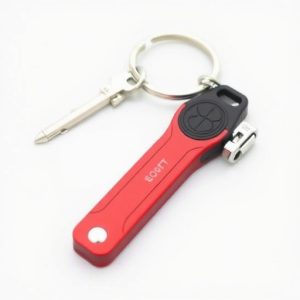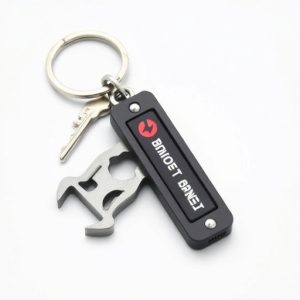Kubotan Legal Requirements: Ensuring Safety with Keychain Self-Defense
The Kubotan Keychain Escape Techniques are compact, versatile self-defense tools gaining popularity…….
The Kubotan Keychain Escape Techniques are compact, versatile self-defense tools gaining popularity for personal safety. Their unique design allows users to apply pressure points and access hard-to-reach areas, offering both defense and escape routes in critical situations. However, the legality of these keychains varies globally due to differing local laws; understanding these regulations is crucial for compliance and avoiding legal issues. Manufacturers must adhere to strict safety standards, balancing functionality with aesthetic appeal, ease of use, and reliability to empower consumers in emergency scenarios.
“Ensure your safety and compliance with a comprehensive check into the legal requirements surrounding keychain safety devices, like the Kubotan Keychain Escape Techniques. This article guides you through the intricate legal landscape of self-defense tools, offering insights on staying within regulatory boundaries. From understanding core techniques to incorporating best practices for consumer protection, discover key considerations for choosing and using these devices legally. Stay informed, stay safe.”
- Understanding Kubotan Keychain Escape Techniques: A Brief Overview
- Legal Landscape: Exploring the Legality of Self-Defense Devices
- Key Considerations for Ensuring Compliance with Regulations
- Incorporating Safety Features: Best Practices for Consumer Protection
Understanding Kubotan Keychain Escape Techniques: A Brief Overview
The Kubotan keychain escape technique has gained recognition as a valuable tool for personal safety, especially in challenging situations. This compact device is designed to be easily accessible and offers a range of functions, including self-defense capabilities. The Kubotan’s unique shape allows it to serve as both a tactical tool and a means of escape. Users can employ various techniques to defend themselves or quickly exit restrictive spaces.
These escape techniques involve strategic applications of the device’s pressure points and tools. For instance, the pointed end can be used to trigger alarm systems or penetrate surfaces in an emergency. The flexible body enables users to reach and manipulate hard-to-access areas, providing a way out when trapped. Understanding these Kubotan keychain escape techniques empowers individuals to take control and enhance their safety during unexpected events.
Legal Landscape: Exploring the Legality of Self-Defense Devices
In many jurisdictions, the legality of self-defense devices like the Kubotan keychain escape techniques is a nuanced topic. These small, easily concealed tools are designed to provide individuals with a means of escaping from dangerous situations, but their use and possession are subject to varying legal interpretations. The legal landscape surrounding these devices is shaped by local laws, regulations, and public safety considerations.
Some countries and regions have specific legislation that governs the carrying and use of self-defense tools, including keychains equipped with spiky or sharp components. These laws often classify such devices as weapons or offensive instruments, dictating where and how they can be possessed and used. Understanding these legal requirements is crucial for individuals considering the acquisition of a Kubotan keychain for personal safety, ensuring compliance to avoid potential legal repercussions.
Key Considerations for Ensuring Compliance with Regulations
When assessing keychain safety device legal requirements, several key considerations come into play to ensure compliance with regulations governing self-defense tools like the Kubotan Keychain Escape Techniques. First and foremost, it’s essential to understand the specific laws and ordinances in your jurisdiction that define what constitutes a legal self-defense device. This includes factors such as permitted defense mechanisms, restrictions on force levels, and any registration or licensing requirements.
Additionally, manufacturers and distributors must adhere to safety standards to guarantee that their products are designed and constructed to minimize risks. This involves rigorous testing for durability and functionality while ensuring the device’s primary purpose remains non-lethal self-defense rather than causing excessive harm. Compliance with these regulations not only safeguards users but also fosters public trust in such devices as viable options for personal safety.
Incorporating Safety Features: Best Practices for Consumer Protection
Incorporating safety features into keychain designs is a proactive approach to consumer protection, ensuring that what seems like a simple accessory can serve as a vital tool in emergency situations. Keychains equipped with self-defense capabilities, such as the Kubotan Keychain Escape Techniques, are gaining popularity due to their compact size and versatility. These devices often include functions like sharp points or tools that can be used for self-defense or to create distance from dangerous situations.
Best practices for integrating safety features involve balancing functionality with aesthetic appeal. Designers should prioritize ease of use, ensuring that the incorporated tools are accessible without compromising the keychain’s overall usability and portability. Regular testing and quality control measures are essential to guarantee the reliability and effectiveness of these devices. Additionally, clear labeling and comprehensive user manuals can empower consumers to recognize and utilize these safety features when needed.
When it comes to personal safety, especially in understanding kubotan keychain escape techniques, it’s crucial to balance self-defense capabilities with legal considerations. The legality of self-defense devices varies across regions, making it essential for consumers and manufacturers alike to stay informed about local regulations. By adhering to best practices and key considerations outlined in this article, individuals can ensure they possess and use kubotan keychain escape techniques responsibly while staying within the law. This enables folks to be prepared and confident, knowing their rights and the safety features built into these compact tools.


